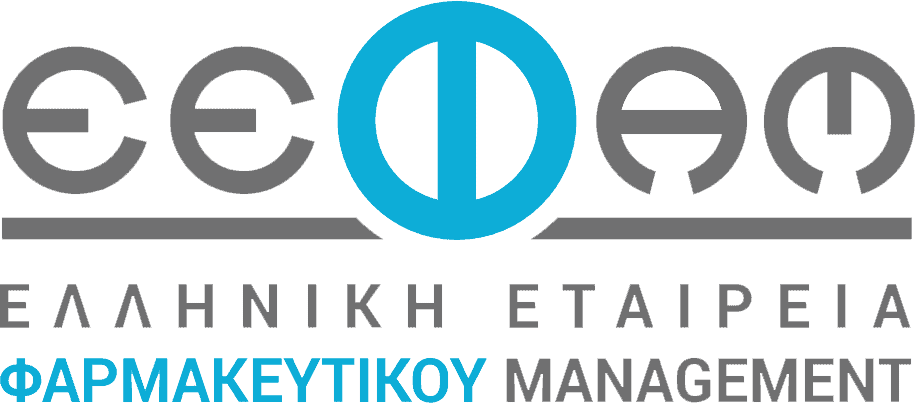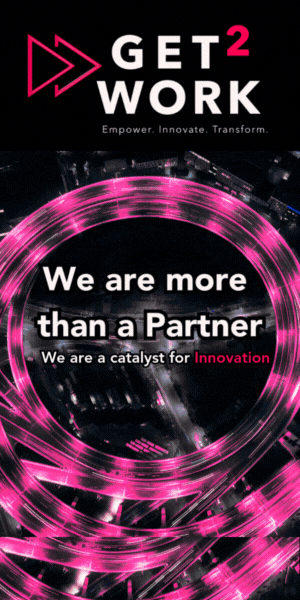Blog
Blog
Transformative leadership for extraordinary times

Most business leaders now understand that we are living through a “great reconfiguration,” a period in which whole industries, economies, and societies are being reshaped. Yet given the short-term pressures they face, few executives find themselves in a position to really contend with these changes, what the changes imply for the transformation their organization needs, or the capabilities executives must develop as individuals to lead at this extraordinary moment.
Through our research and work with organizations around the world, we have identified five differentiators of “transformative leadership”—a form of leadership that enables executives to understand the nature of the changes that are required, take their organization on the journey to implement them, and deliver results.
When practiced consistently, the five differentiators underpin a capability for leading ongoing transformation—that is, a capacity to continually reimagine what an organization does and how it functions within the context of a world in flux. In summary, transformative leaders:
- Make sense of the world as a basis for reimagining how the organization is going to create value in a new, more complex system
- Set radical ambition, committing to help address a significant problem and compelling the organization to undergo fundamental transformation to achieve it
- Achieve promised outcomes, getting personally involved in reconfiguring the system to enable the organization to go beyond what it knows how to do and fulfill its ambition
- Act as a catalyst, attracting and bringing together the very different capabilities and talent needed to solve the problem the organization has set out to address
- Power the engines, so leaders and their teams remain energized, grow, and develop throughout the transformation, and beyond.
Importantly, we see these leadership differentiators as relevant to anyone with the desire and intention to drive at-scale change, from the C-suite to frontline leaders, those with formal leadership authority and those without—in short, anyone who can contribute to addressing a significant organizational imperative for change.
Leaders today are facing unique circumstances. In the short term, they must deal with a succession of immediate crises, including inflation, supply chain disruption, wars in Ukraine and the Middle East, the threat of recession, and labor market disruptions. In the long term, they face deep and profound megatrends—climate change, technological disruption, demographic shifts, a fracturing world, and social instability—that touch everyone on the planet.
What’s unique is not only the frequency of the crises and the severity of the megatrends, but the fact that the megatrends are causing and accentuating the crises. Therefore, leaders must deal with the present and the emerging future together. They must transform their organization for a world being reshaped by the megatrends, while making sure that their responses to immediate crises accelerate this transformation.
The changes required to position organizations for success in a world dominated by the megatrends will be unlike anything leaders have previously experienced. Take climate change. The transition to a sustainable world requires a complete reconfiguration of the industrial system—how we feed ourselves; how we move around; and how we build, power, and make things. This massive and complex undertaking will affect every organization, in every sector, and in every region. It sits above any single industry and requires the simultaneous transformation of thousands of players that are highly interdependent; involves massive demand-side and supply-side changes; and needs to happen at speed and at scale.
At the same time, technological disruption requires organizations to reimagine how work gets done and, in many cases, reinvent the fundamentals of their business models. Self-driving cars and trucks will revolutionize delivery services and transportation networks; machine learning algorithms can already analyze medical images, patient records, and genetic data to assist in early disease detection and personalized treatment plans; automated content-creation tools can generate articles, design logos, and compose music, transforming creative industries that many thought would be somewhat protected from technological disruptions. Add other advances, such as quantum computing, blockchain, and sector-specific technologies, and leadership teams will need to reinvent the value their organization creates and how it does so in order to remain relevant and to secure investment.
In this environment, not only is the need for change more ubiquitous, but the nature of the transformations required is different—the magnitude of change, the speed at which it needs to happen, the number and diversity of constituencies to bring along, and the impact these transformations will have on stakeholders whom leaders might not have considered in the past.
Finally, consider the ongoing nature of the transformation that these systemic changes require. Leaders need to build an ongoing transformation capability that enables their organization to keep challenging itself, evolving, and adapting.
Five transformative leadership differentiators
What exactly are the practices that help leaders transform their organization in this disruptive world?
Differentiator 1: Make sense of the world
The complex and interrelated challenges described above mean that people across the organization need to understand where the world is headed and how the many constituencies depend on and influence one another. Transformative leaders therefore need to make sense of the world and support their teams in doing the same. Lacking this, the organization risks making the wrong bets, dealing with short-term exigencies in a way that does not help its long-term transformation, and creating a host of unintended consequences. Making sense of the world is not only more difficult than ever—it is also more urgent.
Because no one person can understand the world in its full complexity, transformative leaders engage and convene a diverse set of people to generate a collectively held view of the future. This helps identify the challenges and opportunities the organization and the world are facing, as well as the means of spurring change. And these leaders then articulate that view of the world in simple terms, creating understanding and a sense of agency.
For example, the transformation of Hitachi from a conglomerate with a portfolio across many industries into a more focused engineering and technology group was founded on company president Hiroaki Nakanishi’s sense of the big challenges facing society—and his ability to articulate the opportunity for the organization to lead in social innovation.
As Nakanishi wrote in Hitachi’s 2013 annual report: “Emerging countries in Asia are behind in modernizing their social infrastructure, including their power systems, water systems, and transportation systems, as a consequence of rapid urbanization and population growth. Industrialized countries, meanwhile, are dealing with a variety of challenges, such as electricity shortages, aging social infrastructure, and low birth rates amid a growing elderly population.… The world needs systems that efficiently manage and control energy for households, offices, buildings, factories, and communities; technologies that stabilize power grids to facilitate the introduction of renewable energy such as wind and solar power; and systems that not only make water safe to use, but optimize water recycling with IT to protect the environment and ecosystems by efficiently managing limited water resources.”
These are the needs he positioned Hitachi to help address. To reinforce its sensemaking capabilities, Hitachi also developed a methodology, known as Kizashi, for identifying future trends and opportunities related to social innovation, often working jointly with partner organizations and customers. The Kizashi method combines analysis of political, economic, social, and technological factors to identify emerging social trends, including changes in consumer values.
Differentiator 2: Set radical ambition
Making sense of the world is important, but it is only the beginning. After creating a shared understanding of the issues and opportunities, transformative leaders set a radical ambition, one that makes the organization the author of its own story rather than being at the mercy of circumstances and changes driven by others. Focusing on a major problem that the organization is uniquely positioned to solve stretches the organization—and its people—to the limits of what is feasible, even as leaders supply confidence that the organization can achieve it.
In 2020, at the height of the global covid-19 pandemic, the leaders of life sciences companies, including Pfizer, BioNTech, and Moderna, galvanized their organizations to accelerate development of vaccines that would save millions of lives and livelihoods, achieving in months what would typically take many years.
Pfizer’s CEO, Albert Bourla, had laid the groundwork for this world-changing effort prior to the pandemic by accelerating Pfizer’s transformation into a purpose-driven organization. The crisp articulation of an authentic purpose—“Breakthroughs that change patients’ lives”—provided inspiration for Pfizer’s people during what for many would become their most challenging but also most rewarding year.
Just six days after the World Health Organization declared covid-19 a pandemic, Pfizer signed a letter of intent with BioNTech to codevelop a vaccine—an initiative known as Project Lightspeed. “I knew we had to act,” Bourla later said in a Pfizer interview. “I thought, ‘If not us, then who?’ We had the technical expertise and resources to make the bold moves necessary to develop a vaccine in record time—and that’s exactly what we did.”
Sam Altman, the cofounder and CEO of OpenAI, is another leader known for his ability to set radical ambition. “On questions of design, I ask, ‘What would Steve [Jobs] do?’ but on questions of strategy or ambition, I ask, ‘What would Sam [Altman] do?’” entrepreneur and investor Paul Graham wrote in 2009. Graham cofounded the incubator Y Combinator and hired Altman into that company.
Altman has framed OpenAI’s mission as one to “ensure that artificial general intelligence benefits all of humanity.” He’s deeply aware of how radical that ambition is. In 2019, he compared OpenAI to the Manhattan Project, saying that the US effort to build an atomic bomb during the Second World War had been a “project on the scale of OpenAI—the level of ambition we aspire to.”
How to develop such a radical ambition? “Follow your own curiosity, and start looking internally instead of externally for the answers. Be honest with yourself about the intersection of your skills, your passions, and what the world values,” Altman has advised.
Differentiator 3: Achieve promised outcomes
Having set a radical ambition, transformative leaders channel their organization’s energy toward delivering on it. They translate ambition into outcomes—real-world results that matter to stakeholders who matter—and make big decisions with resolve to set the organization up to deliver.
Their commitment to achieving the promised outcomes starts with communicating the specific and measurable outcomes, internally as well as externally. This is a powerful forcing function for linking all priorities and investment decisions to the most important outcomes and thereby focusing the organization’s energy on what matters most. Outcomes metrics allow leaders to track the progress they make in achieving the promised outcome and their broader aspirations, and to update stakeholders accordingly.
Next, transformative leaders create structures and systems that enable the organization to go beyond what it knows how to do and deliver what truly matters. Although the early stages of a transformation often rely on pilot programs operating outside established structures, transformation does not scale without addressing system-level enablers: the metrics, resources, incentives, decision rights, information flows, processes, and commitments within which people operate.
Transformative leaders remain personally engaged as execution moves forward, challenging everyone to question their assumptions and fighting the organization’s natural tendency to optimize the status quo—and inadvertently targeting functional excellence as opposed to transformative change.
Pfizer’s CEO Bourla remembered that during Project Lightspeed, whenever teams presented solutions based on what had been done before, he found himself asking them for additional choices. After a few months, however, “it became a habit,” he said. “People brainstormed new options on their own.”
Pfizer needed to rethink many of its established practices to deliver on its radical ambition. The team worked on several vaccine candidates in parallel, instead of testing the most promising ones in sequence; they ramped up production ahead of FDA approval; they manufactured in-house ingredients they would typically have outsourced (e.g., lipid nanoparticles) to protect themselves from supply chain failures.
Many of those unconventional decisions were made easier by changes to the system that Pfizer had made prior to the pandemic. These included increased R&D and digital budgets, the addition of a chief digital and technology officer, a reimagining of the company’s go-to-market model, and a business-services transformation.
Making big decisions—and sticking with them
Transformative leaders need to make many big decisions—not only when they set radical ambitions but also when they create the conditions necessary to deliver on promised outcomes: how to structure the organization, what investments to make, which businesses to sell, what technologies to bet on, and many more. Yet making big decisions, and sticking with them, is what leaders often classify as most difficult.
Here are some of the practices we’ve seen transformative leaders adopt that help them make good decisions, create buy-in, and stay the course.
Decision-making
- Focus on things you know to be true. Turn your attention to what you know to be true—the megatrends—and shape your answers to those givens. Reduce uncertainties by driving change in the areas you control and influencing change where you depend on others.
- Consider the implications from all sides. Solicit input from a diverse set of people, and encourage different points of view. Think through implications and ramifications for all your stakeholders. Consider tasking team members to play devil’s advocate or conducting strategic simulations to understand how different decisions might pan out in a complex and dynamic environment.
- Be clear about the cost of doing nothing. Although making big decisions in an uncertain environment presents risks, inaction is often the riskiest choice of all. Quantify the cost of doing nothing in a thorough way, because unless you make your decision real, it’s not going to translate into action.
Creating buy-in
- Build support from many people. Show the board, investors, your management team, people across the organization, customers, business partners, and others who are impacted how your decision is key to the transformation you’re undertaking. Be transparent about the time it will take, the effort involved, the expected impact on stakeholders, and trade-offs such as short-term pain for long-term success. Communicate in an authentic way, with courage and humility.
- Prioritize around customer impact. Prioritize decisions that have a visible impact on customers, because serving customers is what gets everyone excited—employees, leaders, shareholders, ecosystem partners, and, of course, customers themselves. Stage change in smart ways, proceeding at speed, but without overwhelming the system.
- Put people at the center of your decision. Be clear about the implications on your people, and make them part of the solution. Reassure people of the value they bring, and give them the freedom and means to take leadership in the change involved.
Staying the course
- Be realistic, with yourself and others. Realize the journey is going to take time–success won’t come overnight.
- Keep reinforcing the message. Reiterate the message of change by reminding people of what you’re doing, why you’re doing it, and how you’re going about it. Show stakeholders the progress you’re making against the overarching outcomes metrics you have defined.
- Don’t confuse the big direction with the tactics to get there. You will inevitably experience setbacks, but this doesn’t mean your big decision was wrong; it may be that tactics need to be changed. If your long-term direction is in line with the megatrends, it should be correct. As for the tactics, be adaptive: step in, try out, reflect on what happened, and take the next step.
Differentiator 4: Act as a catalyst
For a company to deliver outcomes that matter and address the challenges that today’s organizations face, a wide spectrum of skills must come together—not just from within the organization, but also from the wider ecosystem, including individuals, businesses, consumers, NGOs, policymakers, regulators, academia, and even competitors. PwC research into the differentiators that set apart top-performing companies finds that ecosystems are strongly associated with their success.
Transformative leaders, therefore, act as catalysts for coalitions, building trust and combining resources across teams and across the wider ecosystems. They are magnets for talent, defining the capabilities they need, finding and attracting diverse talent from new places and through new channels, and creating an environment in which these diverse people can thrive.
Niklas Adalberth, a Swedish technology entrepreneur and cofounder of fintech company Klarna, founded the nonprofit Norrsken Foundation in 2016 to “help entrepreneurs solve the world’s greatest challenges”—including climate change, poverty, human rights abuses, and mental health issues. Selected entrepreneurs receive access to investors, business partners, talent markets, and media, as well as a network of like-minded people working to address pressing social challenges. Norrsken provides this access through its five funds; the Norrsken Houses, which offer coworking space; and events and initiatives that put a spotlight on social entrepreneurs. As Adalberth describes it, Norrsken is an “impact ecosystem where entrepreneurs can find everything they need to make saving the world their business.” Norrsken has made acting as a catalyst its mission.
Differentiator 5: Power the engines
Asking people to constantly step outside their comfort zone increases the risk of burnout. This is especially problematic in the context of transformative change, because successful transformation typically requires upskilling across the organization, which in turn depends on maintaining an environment of psychological safety.
Transformative leaders need to consciously power their own engines so they can power the engines of others. There’s no one-size-fits-all approach to doing so. For Satya Nadella, it’s 30 minutes in the gym every morning; for Elon Musk, a strict sleep schedule; for Barack Obama during his presidency, it was dinner with the family at 6:30; for Angela Merkel, regular hiking and spending time outdoors. Understanding and acting on what you need to do personally to remain energized is essential to the work of leading change.
Transformative leaders then need to help make sure others don’t burn out, paying attention both to their own behaviors and to the organizational practices that structure how work gets done. In 2022, software company TechSmith had leaders cancel all meetings for an entire month, which led to an ongoing reduction in standing meetings and an increase in alternative communication forms such as video messaging. “The number one benefit is employee well-being,” said CEO Wendy Hamilton. “It’s about protecting the energy of employees so they can do their best work when they’re working.”
The tone from the top is key, stresses Nadella, chief executive of Microsoft: “We know what stress does to workers.… I can set that expectation, that our people can get an email from the chief executive at the weekend and not feel that they have to respond.” Chip Bergh, who recently retired after more than a decade as CEO of Levi Strauss, also made it his job to power the engines of his team: “I make sure I spend time with every member in my leadership team one-on-one. And I work hard, every day, to foster a culture and environment that provides them the space and psychological safety to tell me what’s on their mind.”
Transformative leaders also strive to maintain a growth mindset, for others and for themselves. They act as coaches, working alongside their teams to enable them on the journey. They are critically aware of their own strengths and weaknesses, and throw themselves into situations that allow them to test and learn new skills and behaviors. In short, they understand that everyone involved in a transformation—starting with themselves—needs to transform at least as much as the organization.
A self-reinforcing system
The five differentiators of transformative leadership we describe in this article constitute a self-reinforcing system: working on any one of them supports efforts in the others, whereas neglecting one can significantly harm leadership effectiveness overall.
In our experience, most leaders have headroom to increase their performance across all five. Although you might be tempted to focus on just one or two areas, consider what happens if you overlook others:
- If you aren’t making sense of the world, you risk setting the wrong ambition by focusing on solving a problem that isn’t relevant now or in the future.
- If you aren’t setting a radical ambition, you risk not stretching the organization enough, so it falls short of achieving the outcomes that truly matter.
- If you don’t achieve the promised outcomes, you will not fulfill your ambition, which will negatively affect motivation and therefore your ability to act as a catalyst or power the engines of others to keep going.
- If you don’t act as a catalyst, you will not be able to attract the diverse talent that is needed to achieve the promised outcomes or to make sense of the world.
- If you don’t power the engines, you and your team risk running out of steam and failing to overcome the critical problems you face.
On a positive note, working on any one of the principles will help your efforts in the others. Acting as a catalyst, for example, allows you to attract key talent and align business partners within your organization, helping you make sense of the world in a more comprehensive way, set more radical ambitions, and achieve more than your organization could on its own.
The complex, interlocking challenges of our era mean that most organizations will need to transform continuously in order to thrive. For some, it will be a matter of survival. Yet most don’t have the leadership capacity they need to prosper on this journey. They don’t have enough leaders who fully understand the nature of the challenge or who have honed the skills to lead through it. Many organizations are not even aware of the scale of the leadership gap.
For leaders themselves, there are often reasons not to commit to transformation. Investors or budget-holders may be more focused on short-term priorities than on laying the foundations for long-term success. Immediate crises may require full attention. A leader’s remaining tenure at the company may be too short to complete the transformation journey. There are many reasons to wait and keep progressing incrementally.
Yet as leaders contemplate the challenges and opportunities facing their organization today, many will feel compelled to overcome the constraints of the existing system and act on the transformation imperative. In doing so, and in honing their capabilities as transformative leaders, they will fulfill the one true task of leadership: shaping the future for others.
The authors thank Susannah Anfield and Nadia Kubis for their contributions to this article.






